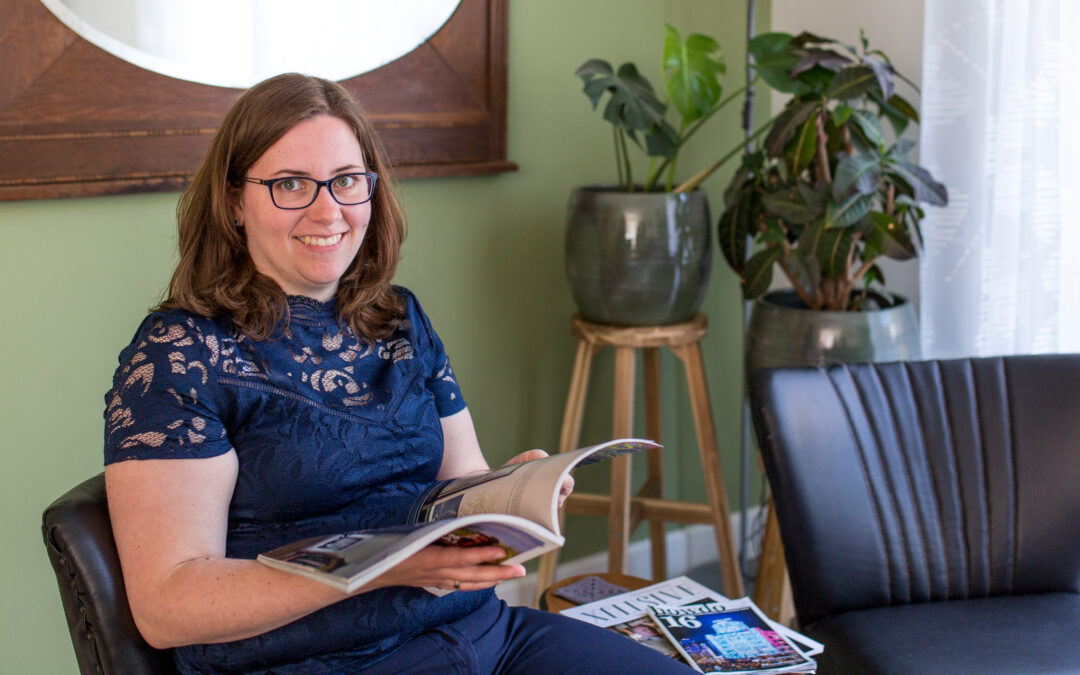Why is colour important?
Imagine, you work in a grey room the whole day. How would you feel at the end of the day? Yes, this example is a bit extreme. But how are you feeling when you walk through nature? So, let’s use some colours in your house in this grey period of the year.
For me, colour is really important. If the colours don’t match in your house in the Netherlands, it can look dirty or a mess. Balance in colour is important to make you feel at home.
How do you see the colours?
Did you know that your eye can see around 40.000 shades of colours?
That’s a lot. For now, it goes too far to explain it all. It is good to know that the sun produces white light. That light exists of all colours together, like you see in a rainbow. If that light falls on a surface, the surface will absorb some colour. And reflects the light which you don’t see. That light is reflected in your eyes and interpreted by your brain. And that’s how you can see that the surface is red, blue or yellow.
Check this film, if you want to know more.
How do you use colour in your house?
Your favourite colours
Almost everyone has some colours or shade which are more favourable than others. This is important to know. Everyone has a different taste. And every culture has its own association with colours. So let’s start to use colour in your house in the Netherlands.
Step 1 Use your favourite colours.
For a balanced colour plan, you rather limit the colours in one room to a maximum of two (except for white). Of course, you can use different shades of the same colour.
Maybe you have seen the television series of Pippi Longstocking in the past. It’s a good example of what happens when you don’t make choices for colours.
Many expats have difficulty to find the right colour in their interiors. Are you living in or around Eindhoven, do you want help with choosing the right colour? Send us a message.
The light in your house
Have you noticed that the colours in the Netherlands are showing up differently than in your home country? Why? It all has to do with the distance of the sun, the clouds and the season. The same you will have by painting two walls the same colour, one will look darker than the other. It depends on how the natural light from the outside is displayed in your room.
Also, take into account what kind of light bulbs and lamps you use in the space. It can really make the difference between feeling cold or warm.
Step 2 See what the light is doing in a room
Which wall is the darkest? How much light is there during the day? On which wall reflects the light?
When you have a dark room: use light colours to brighten the room. A light room can maybe use some extra colour.
Colours influence each other
Have you ever been in a room where a wall was painted red and the others white? What did the white walls look like? Red or pink? Warmer?
Ever stared at a red wall and then stared at a white wall? Maybe you have seen the wall turning green.
These examples give you some insight of what colours can do to influence each other.
Step 3 Choose on which part of the room you want to use colours.
An addition: white and black are not really colours, so they don’t count. If you want to use a bright colour, don’t overdo it by painting all the walls. In most cases, one wall is already enough to have the effect you are searching for.
Step 4 Which colours are already in the space
For example: when you have a wooden floor, your floor is brown. Choose a colour which matches brown. Beige, for example, green or purple to make a statement. But when you use a colour, make sure that the colour comes back to another item in the room. Flower pots, paintings or furniture can help you.
If you want to do it perfectly, make sure the colours of your whole house are in balance.
Step 5 Choose the right shade of the colour
That’s a difficult step. Normally, I use this rule: If you use shades, create at least a 30% difference in the greyscale and/ or brightness of the colour. Or use exactly the same greyscale and brightness in another colour.
This may need more explanation. A colour can be light or dark. When you look through your eyelashes of your eyes, the colours become more grey. That is the greyscale. For example: blue is darker than yellow.
On the other hand, you have the brightness of the colour. Red and yellow are very bright compared to blue or green. And grey isn’t bright at all.
Conclusion:
Choosing the right colour is not easy. Colours may look different in the Netherlands, due to the sun. By using the 5 steps, you can make a good decision. And don’t worry: painting a wall again is maybe a few hours of work!
Notice: this blog is not complete, due to the complicated subject of colour.
Want to change your new house in and around Eindhoven? And need advice on colours, paint and surfaces? Just click on message , and we will look into your specific situation. So, let’s use more colour in your house!




Trackbacks/Pingbacks